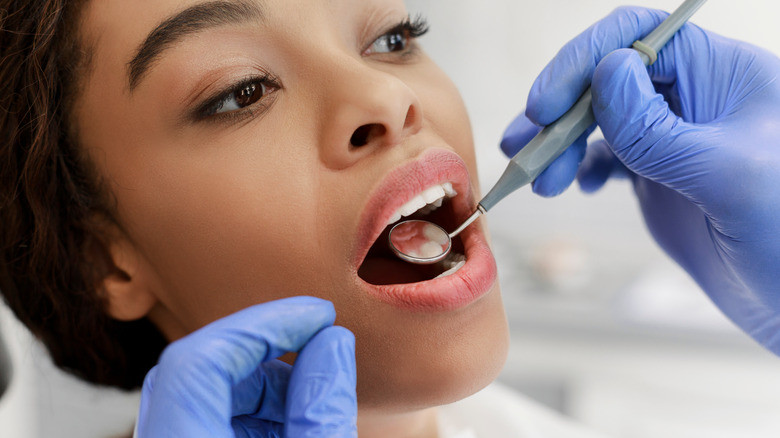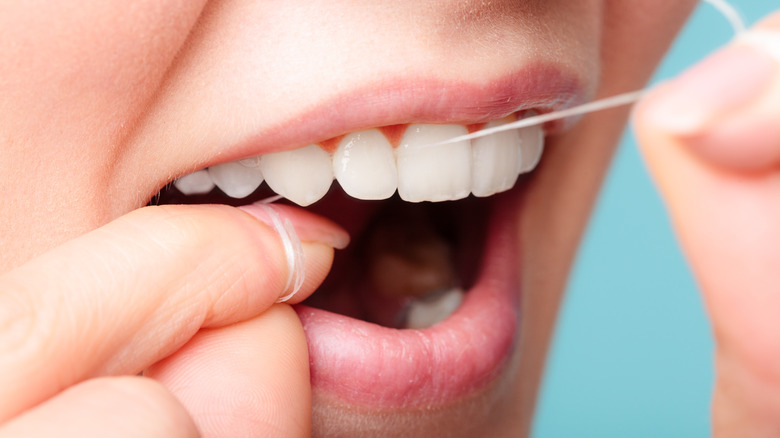Plaque Versus Tartar: What's The Difference?
There's a lot going on in your mouth at any given time, and microbes play a big part in it. There are around 700 types of microorganisms living in your mouth, according to the National Institute of Dental and Craniofacial Research. Some microbes hang out on your tongue, while others like to attach themselves to your teeth. Some of these microbes are useful, while others are not so much.
Good microorganisms help keep the bad bacteria in check, but when harmful bacteria like plaque start to mingle with sugar, they can multiply and spread quickly. As bacteria feed on the sugar in your mouth, they create acids that damage your tooth enamel, as well as the roots of your teeth. One problem that arises from too much bacteria is gingivitis, per Healthline. If left on their own, these bacteria make a home on your teeth and eventually destroy the enamel of your teeth, causing other problems like cavities and tooth decay.
Plaque can lead to tartar
If you've ever woken up and felt like you had something fuzzy on your teeth, it was likely plaque (via Healthline). Plaque begins as a tacky substance on your teeth that can be removed with daily brushing and flossing. When it goes unchecked, it hardens to become tartar, and it can form above and below the gum line. Unlike plaque, tartar is difficult to remove. In fact, most of the time, a trip to the dentist's office is the only way you can have it successfully removed, per WebMD. If tartar is not removed, it can lead to several problems, including gingivitis. Periodontitis is advanced gingivitis in which a pocket forms between your teeth and gums before eventually becoming infected.
To best way to avoid tartar buildup on your teeth is to brush twice a day, floss daily, and use an antiseptic mouthwash. Some studies even suggest that the polyphenols in cranberries are helpful in reducing plaque (via Healthline).


